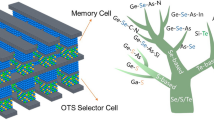Abstract
A low-supply, nano-watt level CMOS-only voltage reference is proposed in this paper for the internet-of-things, wireless sensor networks, and implantable biomedical chips. The threshold voltage fluctuation caused by the process variation can be suppressed to within 30 mV through utilizing the threshold voltage difference between thick-gate transistors and thin-gate transistors. Benefiting from the self-regulating technology and subthreshold operation, the circuit branches and supply voltage are significantly decreased compared with the previous CMOS voltage reference, which facilitates low power design. What's more, the proposed CMOS voltage reference also circumvents resistors, bipolar transistors, and operational amplifiers. The simulation results demonstrate that the proposed CMOS voltage reference consumes a quiescent power consumption of 1.56-nW at 0.6 V, providing an average voltage reference of 305.32 mV using a 0.18-μm CMOS process. The mean temperature coefficient of the voltage reference is 5.87 ppm/°C with a standard deviation of 2.33 ppm/°C over a temperature range of − 40 °C ~ 130 °C. The linearity sensitivity is 0.23%/V across a supply voltage range of 0.6 V to 1.8 V. Furthermore, the power supply ripple rejection below 100 Hz and the mean output noise @10 Hz can reach − 58.6-dB and 3.99 μV/√Hz. The simulation results match the theoretical analysis.













Similar content being viewed by others
Data Availability
Date sharing is not applicable to this article as no datasets were generated or analyzed during the current study.
References
D. Albano, F. Crupi, F. Cucchi, G. Iannaccone, A sub-kT/q voltage reference operating at 150 mV. IEEE Trans. Very Large Scale Integr. Syst. 23(8), 1547–1551 (2015)
H. Aminzadeh, Self-biased nano-power four-transistor current and voltage reference with a single resistor. Electron. Lett. 56(6), 282–284 (2020)
H. Aminzadeh, M.M. Valinezhad, 0.7-V supply, 21-nW all-MOS voltage reference using a MOS-only current-driven reference core in digital CMOS. Microelectron. J. 102, 104841 (2020)
Y. W. Chen, J. J. H. C. H. Chang, et al. A 0.7V, 2.35% 3σ-accuracy bandgap reference in 12nm CMOS, IEEE International Solid-State Circuits Conference (ISSCC), San Francisco (2019), pp. 306–307
Y. Cheng, C. Hu, MOSFET modeling & BSIM3 User’s Guide (1999)
Y. Ji, J. Lee, B. Kim et al., A 192-pW voltage reference generating bandgap-Vth with process and temperature dependence compensation. J. Solid-State Circuits 54(12), 3281–3291 (2019)
I. Lee, D. Blaauw, A 31 pW-to-113 nW hybrid BJT and CMOS voltage reference with 3.6% ± 3σ-inaccuracy from 0 °C to 170 °C for low-power high-temperature IoT systems, 2019 Symposium on VLSI Circuits (VLSI) (2019) , pp. C142–C143
J. Lei, Z. Wang, X. Wang, A 68-nW novel CMOS sub-bandgap voltage reference circuit. Microelectron. J. 89, 37–40 (2019)
J. Liao, Y. Zeng, J. Li et al., A 3.9 ppm/℃, 31.5 ppm/V ultra-low-power subthreshold CMOS-only voltage reference. Microelectron. J. 96, 104706 (2020)
X. Li, L. Zhou, Y. Chen et al., A curvature-compensated CMOS bandgap with negative feedback technique. Microelectron. J. 52, 104–111 (2016)
J. Lin, L. Wang, C. Zhan, Y. Lu, A 1-nW ultra-low voltage subthreshold CMOS voltage reference with 0.0154%/V line sensitivity. IEEE Trans. Circuits Syst. II Express Briefs 66(10), 1653–1657 (2019)
Y. Osaki, T. Hirose, N. Kuroki, M. Numa, 1.2-V supply, 100-nW, 1.09-V bandgap and 0.7-V supply, 52.5-nW, 0.55-V subbandgap reference circuits for nanowatt CMOS LSIs. IEEE J. Solid-State Circuits 48(6), 1530–1538 (2013)
M. Rashtian, A resistorless low-power voltage reference based on mutual temperature cancellation of VT and VTH. Int. J. Electron. (2021)
M. Rashtian, Sub 1-V supply voltage-reference based on mutual temperature cancellation of VT and VTH. Analog Integr. Circ. Sig. Process 105, 477–482 (2020)
H. Sen, S. Diao, F. Lin, A 0.7-V, 8.9-μA compact temperature-compensated CMOS subthreshold voltage reference with high reliability. Analog Integrat. Circuits Signal Process. 91, 53–61 (2017)
A. Shrivastava, K. Craig, N. E. Roberts, et al., A 32 nW bandgap reference voltage operational from 0.5 V supply for ultra-low power systems, IEEE International Solid-State Circuits Conference (ISSCC) (2015), p. 1–3
X. Tong, A. Yang, S. Dong, A 17.6-nW 35.7-ppm/°C temperature coefficient all-SVT-MOSFET subthreshold voltage reference in standard 0.18-μm N-Well CMOS. IEEE Access 8, 94043–94053 (2020)
K. Ueno, T. Hirose, T. Asai, Y. Amemiya, A 300 nW, 15 ppm/℃, 20 ppm/V CMOS voltage reference circuit consisting of subthreshold MOSFETs. IEEE J. Solid-State Circuits 44(7), 2047–2054 (2009)
L. Wang, C. Zhan, J. Tang et al., A 0.9-V 33.7-ppm/°C 85-nW sub-bandgap voltage reference consisting of subthreshold MOSFETs and single BJT. IEEE Trans. Very Large Scale Integr. Syst. 26(10), 2190–2194 (2018)
L. Wang, C. Zhan, A 0.7-V 28-nW CMOS subthreshold voltage and current reference in one simple circuit. IEEE Trans. Circuits Syst. I Regul. Pap. 66(9), 3457–3466 (2019)
Y. Wang, Z. Zhu, J. Yao, Y. Yang, A 0.45-V, 14.6-nW CMOS subthreshold voltage reference with no resistors and no BJTs. IEEE Trans. Circuits Syst. II Express Briefs 62(7), 621–625 (2015)
T. Z. Yan, C. W. U, M. K. Law, et al., A − 40 ℃–125 ℃, 1.08 ppm/℃, 918 nW bandgap voltage reference with segmented curvature compensation. Microelectron. J. 15 (2020)
H. Zhang, X. Liu, J. Zhang et al., A nano-watt MOS-only voltage reference with high-slope PTAT voltage generators. IEEE Trans. Circuits Syst. II Express Briefs 65(1), 1–5 (2018)
Z. Zhu, J. Hu, Y. Wang, A 0.45 V, nano-watt 0.033% line sensitivity MOSFET-only sub-threshold voltage reference with no amplifiers. IEEE Trans. Circuits Syst. I Regul. Pap. 63(9), 1370–1380 (2016)
Acknowledgements
This work was supported in part by the National Natural Science Foundation of China under Grant 62104193, 61674122, and 61804124.
Author information
Authors and Affiliations
Corresponding author
Additional information
Publisher's Note
Springer Nature remains neutral with regard to jurisdictional claims in published maps and institutional affiliations.
Rights and permissions
About this article
Cite this article
Xin, X., Hu, Y., Cai, J. et al. A 0.6-V, 1.56-nW, 5.87-ppm/°C, 0.23%/V CMOS-Only Subthreshold Voltage Reference with the Threshold Voltage Difference. Circuits Syst Signal Process 41, 4256–4274 (2022). https://doi.org/10.1007/s00034-022-01994-9
Received:
Revised:
Accepted:
Published:
Issue Date:
DOI: https://doi.org/10.1007/s00034-022-01994-9




